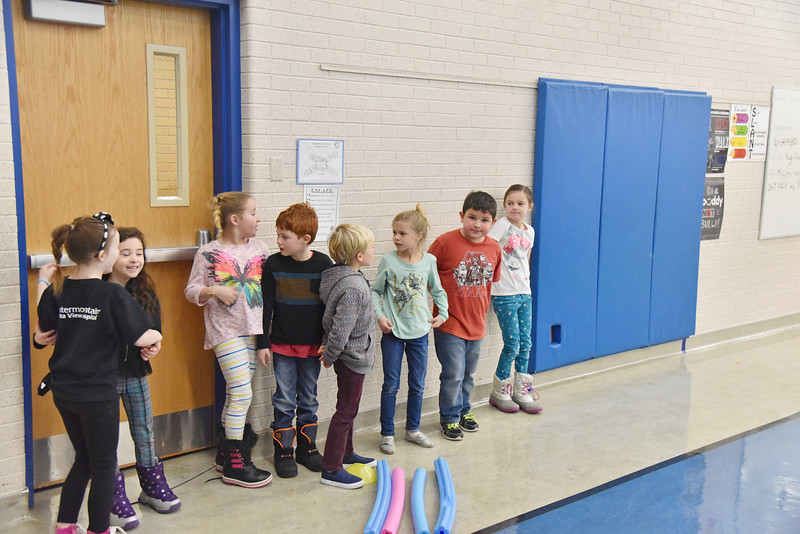This game promotes team building and many skills such as problem-solving, leadership, cooperation, teamwork, listening, creative thinking and conflict resolution.
Let’s Go Fishing

Large Group (10 and up)
Ages 6-10
Bean Bags
10 minutes or more
Development Goal
Problem solving, leadership, cooperation, teamwork, non-verbal communication, verbal communication.
Before You Start
- Players line up on a starting line.
- An object (such as a bean bag or rubber chicken) is placed a distance in front of the starting line.
- Explain that the object is an egg and as the leader (parent fish), you are in charge of protecting it.
- Explain the object of the game: to get the egg from the leader and back across the starting line as a team.
- Tell players that while your back is turned and you are saying “Let’s go, Let’s go, Let’s go fishing!” they may move, but once you finish and turn around they must stop. Practice this with the players.
- Check that everyone understands the rules.
Set Up
A visible starting line marked by cones, paint or surface differences. A rubber chicken, stuffed animal, cone or other small throw-able object.
How to Play
- The leader stands behind the object facing the players.
- The leader turns around with the players behind them and loudly says, “Let’s go, Let’s go, Let’s go fishing!”
- The players may only move while the leader is turned the other way and is speaking the phrase.
- When the leader finishes “fishing,” they turn around and all players must freeze.
- If anyone is moving after “fishing,” the whole group goes back to the starting line.
- If no players are caught moving, the leader turns around again and loudly says, “Let’s go, Let’s go, Let’s go fishing!” and the players get to move from their current spot.
- Once players get close enough to take the object from behind the leader, the players need to hide it behind their backs so the leader does not know which player has the object.
- Players still may only move during the phrase, but once the object is taken, the leader gets to guess who has the object. (One guess per roughly 8 players.)
- If the leader guesses correctly, the object is returned and the players begin again at the starting line.
- After incorrect guesses, the players continue moving from where they are during the phrase.
- The objective is for the players to get the object back to their starting line without the leader guessing who has it.
- After each try, have the team discuss their strategy and improve it.
Variations
- Set a number of how many people must hold the object (to promote inclusion and community).
- Increase the distance (to lengthen game and give more opportunities).
- No throwing the object (to increase complexity).